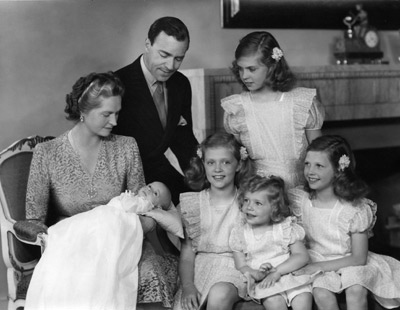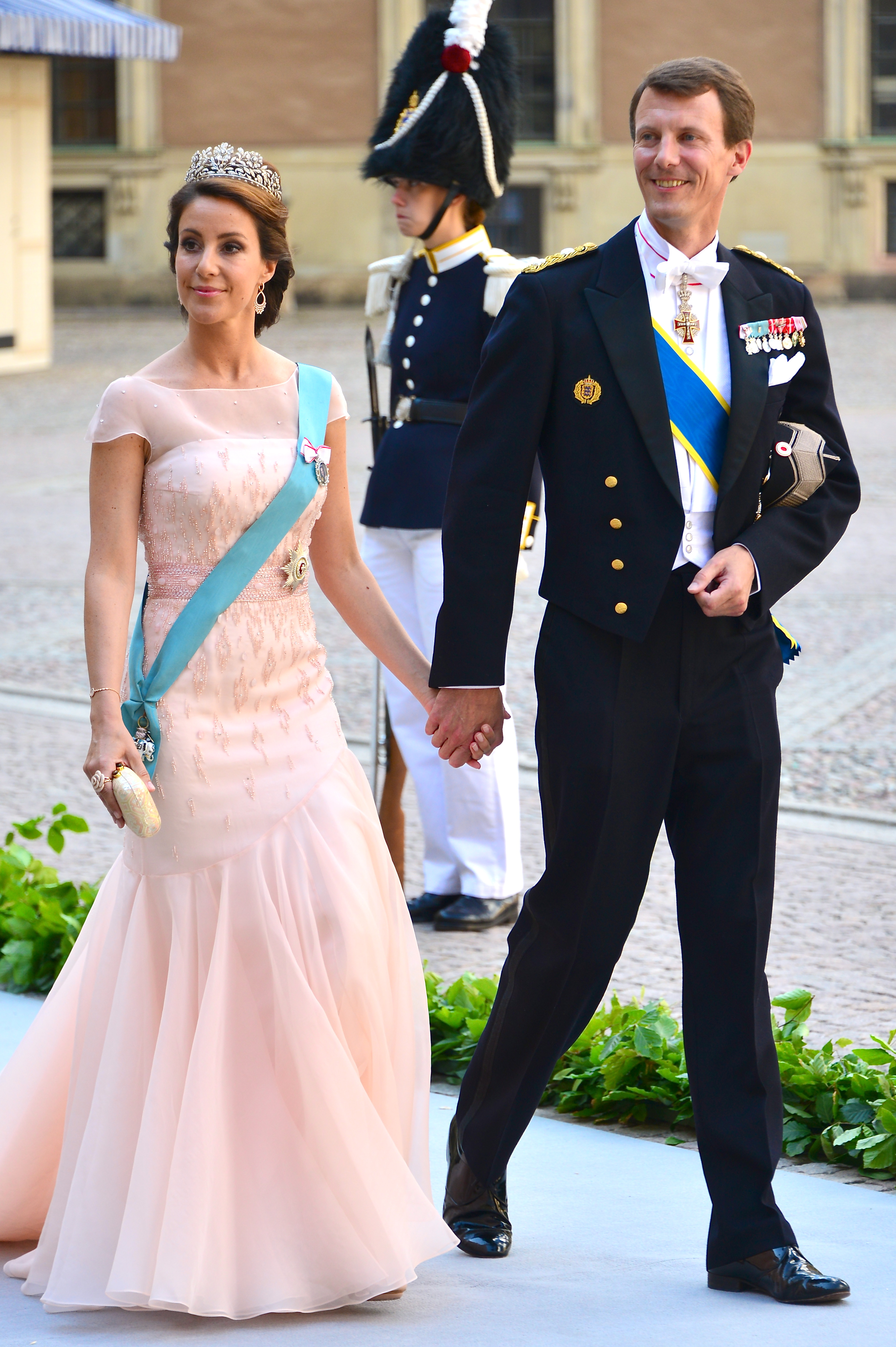 |
Elizabeth II and Prince Philip at her
coronation in 1953.
|
In the last century, particularly since World War II, that tradition has been waning. In fact the last time a royal in one of the currently reigning royal houses married another royal was 30 years ago when Princess Astrid of Belgium married Archduke Lorenz of Austria, a grandson of the last Austrian emperor.
Today, there are seven reigning Kings and Queens in Europe. Of those, only two made royal marriage: King Juan Carlos of Spain who married Princess Sophia of Spain (daughter of King Paul) and Queen Elizabeth II of the United Kingdom who married the former Prince Philip of Greece (grandson of King George I). One of the current monarchs, the new King Philippe of Belgium, married a member of the aristocracy, Mathilde d'Udekem d'Acoz, who held the rank of Jonkvrouw, the lowest Belgian title of nobility. The other four are married to commoners--mostly to foreign commoners. [UPDATE: With the subsequent abdication of Juan Carlos, only Elizabeth II has a royal spouse.]
Only King Harald of Norway is married to a commoner from his own country, the former Sonja Haraldsen. It is he, in a way, who has inspired me to take a look at these modern "unequal" marriages. After recently reading the novel, "A Shopkeeper's Daughter," (read my review) I started wondering about the transition toward more royal-common marriages, specifically wondering whether these marriages, which are supposedly more often love matches are happier. In my consideration, the author of "A Shopkeeper's Daughter," (buy the book) Rachel Wisdom, kindly let me read a college paper she had written on the topic. She contends that the tendency away from dynastic marriages was triggered by several factors including the changing culture of post-War Europe; she looks particularly at the 1960s. She also discusses the fact that the generation of royals born in the 1930s and 1940s were more likely to be sent to schools with "ordinary" people, so they were more likely to meet and fall in love with ordinary people.
 |
The princess-rich Crown Princely family of the post-War
Sweden; the infant is the current King Carl XVI Gustav.
|
The shift toward marrying commoners did not happen smoothly. Harald of Norway waited a decade for permission to marry Sonja. The current King of Sweden had to wait for the last king to die before he could marry his German love, Silvia Sommerlath. Many young royals even gave up royal titles and/or their places in the line of succession to marry commoners, including a couple of the Swedish king's sisters, the Spanish king's youngest sister and the Norwegian king's sisters.
That doesn't mean that there was never love involved when a royal married another royal or princely family. The marriage of Queen Elizabeth and Philip was clearly a love match that started with a school girl crush when she was just 13. Ironically perhaps, her father would have preferred a nice aristocratic English boy over the dashing, penniless Greek prince from an ambitious family. But, love won out and they have now been married for 66 years.
 |
The post-War Dutch royal family with three little
princesses all headed for controversial marriages.
|
This tendency toward marriage for love has meant that more royals have married members of the aristocracy or commoners, but has also meant that royal marriages have become less stable. In the old days, divorce among royals was almost nonexistent and it was extremely controversial. In fact, in 1960, the idea that Princess Astrid of Norway wanted to marry a divorced man was much more incendiary than the fact that he was a commoner. A few years earlier, Princess Margaret in Britain chose not to marry the divorced man she loved after years of battering in the press over the matter.
In her paper, Rachel argues that the rise of the modern media has led to the demise of the accepted royal mistress, which has given rise to royals marrying the people they love instead of keeping them on the side as mistresses (with a few notable exceptions like the Prince of Wales).
 |
Joachim of Denmark with his French-
born second wife, Marie
|
The winds of change have definitely cleared out the old formal and informal marriage prohibitions--with a few exceptions. Interestingly, in the deposed monarchies, the claimants still cling to old dynastic rules about the heirs making equal marriages. This has led to fighting and family feuds among Hapsburgs, Bourbons, Romanovs, Hohenzollerns, etc. Without a reigning monarch to lift the old rules, they are stuck in the past.
Today, the heirs to still extant thrones are married to people they chose despite controversy. Felipe of Spain married a woman who had been married before sparking questions among a Catholic population. Haakon of Norway married a woman who had borne a child out of wedlock. Charles Prince of Wales married the woman who had been his mistress and whose former husband, out of accordance with Church of England rules, is still living. Frederik of Denmark married a foreigner he met in a bar. Victoria of Sweden married a man who had been her personal trainer.
 |
The Dutch King with his Argentine wife and their three
princesses, including heiress Catharina Amalia
|
If you count reigning houses only, the last royal to royal marriage was in 1982 of Princess Margaretha of Luxembourg to Prince Nikolaus of Liechtenstein. They have had three surviving children, none married yet.
ReplyDeleteAstrid's husband Lorenz was undoubtedly of royal stock but he was not of a reigning royal house. If you count this marriage, then the 1993 marriage of Hereditary Prince Alois of Liechtenstein to Duchess Sophie in Bavaria (great-granddaughter of the last King) is more recent. They have had four children.